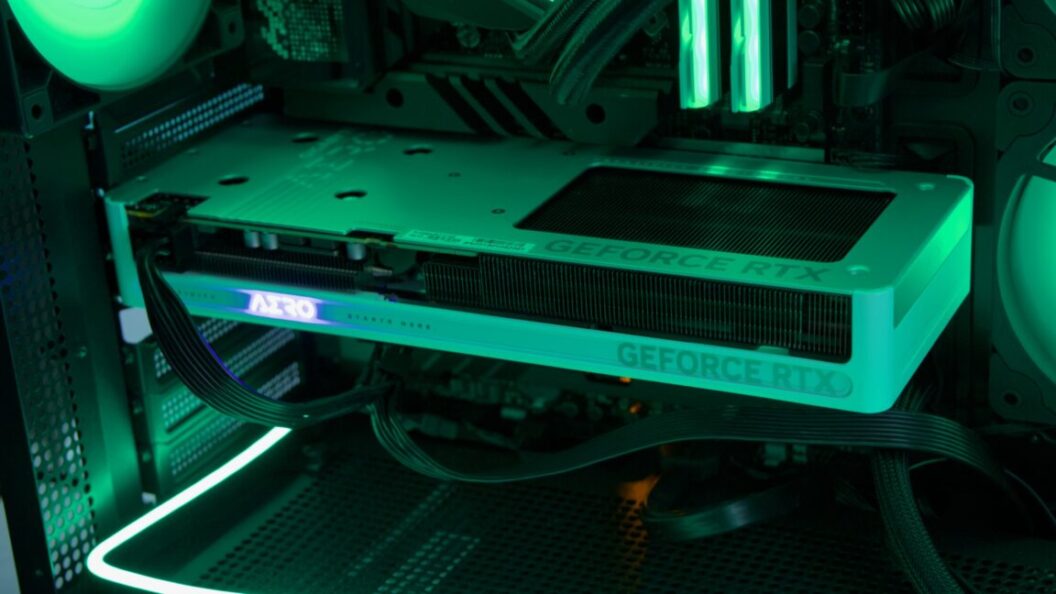Nvidia’s Latest GPUs: RTX 5060 and 5060 Ti Offer Limited Upgrades
In the ever-evolving landscape of graphic processing units (GPUs), Nvidia has unveiled its latest offerings—the RTX 5060 and the RTX 5060 Ti. Positioned as relatively minor updates over previous generations, the new cards come with notable specifications but may leave potential buyers questioning the value given their pricing and memory limitations.
General Overview: Minor Upgrades in a Competitive Market
The RTX 5060 and 5060 Ti are designed to improve efficiency while lowering costs compared to their predecessors. However, the debate continues over whether these upgrades provide sufficient incentives for gaming enthusiasts. The RTX 5060 Ti, while promising up to 16GB of GDDR7 memory, is priced around $429—though current market listings often push this to approximately $500. In comparison, the RTX 3070 was originally priced at $599 with similar performance metrics.
“It’s getting harder to justify spending that kind of money on a GPU with just 8GB of RAM,” noted a market analyst, emphasizing the growing need for more memory to cater to modern gaming demands.
Technical Specifications: A Closer Look
Detailed Specifications
A succinct comparison of the specifications between the RTX 5060, 5060 Ti, and their predecessors reveals several key differences:
| Feature | RTX 5060 Ti | RTX 4060 Ti | RTX 5060 | RTX 4060 | RTX 3050 Rumored |
|---|---|---|---|---|---|
| CUDA Cores | 4,608 | 4,352 | 3,840 | 3,072 | 2,560 |
| Boost Clock | 2,572 MHz | 2,535 MHz | 2,497 MHz | 2,460 MHz | 1,777 MHz |
| Memory Bus Width | 128-bit | 128-bit | 128-bit | 128-bit | 128-bit |
| Memory Bandwidth | 448 GB/s | 288 GB/s | 448 GB/s | 272 GB/s | 224 GB/s |
| Memory Size | 8GB/16GB GDDR7 | 8GB/16GB GDDR6 | 8GB GDDR7 | 8GB GDDR6 | 8GB GDDR6 |
| Thermal Design Power (TDP) | 180 W | 160 W | 145 W | 115 W | 130 W |
As noted, both the 5060 and 5060 Ti feature Nvidia’s Blackwell architecture, wherein the higher-tier 5060 Ti boasts a more robust CUDA core count and improved memory bandwidth thanks to the transition from GDDR6 to GDDR7.
Performance Expectations: Price vs. Power
Although the RTX 5060 Ti claims to deliver better performance, it is essential to acknowledge that 8GB of RAM may limit its utility in demanding graphics settings, particularly at higher resolutions like 1440p. Competitors offering GPUs with greater memory capacities may attract gamers looking for longevity in their investments. The shift to GDDR7 does enhance memory performance and overall power efficiency slightly, which is critical given the narrow 128-bit memory bus.
The performance uptake from these GPUs has been described as “respectable but not revolutionary,” making it an uphill battle for Nvidia to draw customers when higher RAM options exist elsewhere.
Design Considerations and Manufacturer Variants
Nvidia has not produced Founders Edition variants for the 5060 and 5060 Ti, instead relying on partner manufacturers to distribute these new GPUs. Notably, the designs from companies like Gigabyte and Asus vary slightly; for example, both 5060 models feature shorter PCBs and utilize 8-pin power connectors, whereas the 5060 Ti employs the more powerful 12-pin connector.
Visual Overview
Images from an Asus version of the cards illustrate this design difference, showcasing the short PCB layout of the RTX 5060 compared to its more robust sibling.
Market Implications and Future Prospects
As the GPU market continues to diversify, the reception of Nvidia’s RTX 5060 and 5060 Ti will largely depend on consumer demand and competition. Many gamers prioritize value for performance in an environment where alternate options offer superior memory configurations.
The significance of these releases highlights shifts in gaming technology and consumer expectations, particularly the increasing demand for GPUs capable of handling high resolutions and complex graphics without compromise due to RAM limitations.
Despite their initial positive attributes, the ongoing reliance on 8GB of RAM may hinder the broader appeal of these new offerings. As enthusiasts deliberate their next purchases, the ongoing performance metrics and competitive pricing will likely dictate the trajectory of Nvidia’s latest GPUs in a crowded market.
In conclusion, while the RTX 5060 and 5060 Ti carve out a niche, their effectiveness in seizing significant market share may remain in doubt, emphasizing the age-old mantra in tech: innovation must keep pace with consumer expectations.









